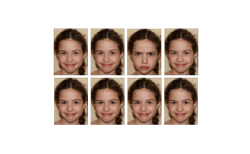Recognizing a face in the crowd
Research project designed to further understanding of autism

A hallmark feature of autism in children is impaired social interaction. Janet Ford, Gebbie Speech-Language Clinic director and assistant professor for clinical practice, is working with graduate students on several studies to assess the relationship between visual search abilities of children with autism and social competency.
Children in the studies are presented with two, timed tasks designed to assess visual search abilities and visual processing. The first task assesses how quickly the children recognize a single different facial expression from a group of similar expressions displayed on a computer screen.
“Normally, the different expression pops out almost instantly, regardless of the crowd size,” Ford says. “The reaction time is typically the same, whether test subjects are shown a group of four faces or 12 faces.”
A second task measures how quickly the children can recognize an object that is different in shape or color from a group of objects on a computer screen.

In a recently completed a study, Ford tested children with typical development to determine the age at which they acquire skills to utilize the “pop-out” effect. “The 11-year-olds could do both tasks well,” Ford says. “Seven- and eight-year-olds did not have this ability.”
Her new study, working with graduate student Ashley Cukier, compares “pop-out” effect abilities in children with autism and children with age-appropriate developmental skills. The study will also include a standardized assessment of the children’s social interaction competency.
“Previous research shows that children with autism typically have faster general visual processing skills and therefore tend to do better on the objects test than their counterparts,” Ford says. “However, children with autism tend not to do as well on the facial expression test. The ability to read facial expressions is of critical importance when interacting with others. We want to determine the relationship between an impaired ability to read facial expressions and social competency.”
Media Contact
Judy Holmes
